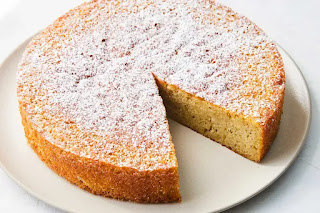Slow Cooked Duck with Green Olives and Herbes de Provence
This recipe comes from Food and Wine and Paula Wolfert: https://www.foodandwine.com/recipes/slow-cooked-duck-green-olives-and-herbes-de-provence
This is the most forgiving and delicious duck recipe you’ll ever find. By slow-cooking duck with aromatics until it’s as tasty and tender as confit, then broiling it until the skin is shatter-crisp, Paula Wolfert manages to play to all of the bird’s strengths. If you’re feeling lazy, you can simply serve the duck with the strained pan juices and forego the stock and olive sauce altogether. If you’re feeding a crowd, you can cook three ducks in a large roasting pan, increasing the onions and aromatics slightly and allowing just a little more cooking time. And you can prepare the dish two days ahead and finish it off at the last moment. Just be sure to have the butcher cut the duck for you—that’s the only step that can be tricky.
Ingredients
- 2 large onions, coarsely chopped
- 1/4 cup plus 2 teaspoons coarsely chopped flat-leaf parsley
- 1 tablespoon plus 1 teaspoon chopped thyme
- 8 garlic cloves, halved
- 2 bay leaves
- 1 large celery rib, sliced 1/4 inch thick
- One 5 1/2-pound duck, halved, with backbone, neck and wing tips removed and reserved
- Kosher salt
- Freshly ground pepper
- Herbes de Provence
- 1 tablespoon tomato paste
- 1/2 cup dry white wine
- 3 cups water
- 1 cup chicken stock, preferably homemade
- Pinch of sugar
- 1 1/2 cups pitted French green olives, rinsed
How to Make It
Step 1
Preheat the oven to 475°. In a small
roasting pan, spread half of the chopped onions, 1/4 cup of the parsley,
1 tablespoon of the thyme and the garlic, bay leaves and celery. Prick
the duck skin all over with a fork and rub the duck with 2 teaspoons of
salt, 1 teaspoon of black pepper and 1 teaspoon of herbes de Provence.
Set the duck halves on the vegetables, cut sides down, and roast for 10
minutes. Prick the duck skin again, cover the pan with foil and reduce
the oven temperature to 275°. Roast the duck for about 3 hours longer,
until the meat is very tender and most of the fat has rendered.
Step 2
Meanwhile, in a large skillet, cook the
backbone, neck and wing tips over low heat until well browned all over.
Add the remaining chopped onions and cook over moderate heat until
browned, about 4 minutes. Pour off the fat from the skillet and add the
tomato paste. Cook, stirring, until it begins to brown, about 3 minutes.
Add the white wine and bring to a boil. Add the water, chicken stock
and sugar and simmer until reduced to 1 cup, about 1 hour. Strain the
stock and skim the fat from the surface.
Step 3
When the duck is tender, transfer the
halves to a work surface. Halve each half; remove any vegetables,
pockets of fat and loose bones. Transfer the duck pieces to a rimmed
baking sheet, skin side up.
Step 4
Strain the juices from the roasting pan
into a saucepan and skim off the fat; boil the strained juices until
reduced to 1/4 cup. Add the strained stock and the olives to the
saucepan and simmer for 10 minutes. Season the sauce with salt, pepper
and herbes de Provence.
Step 5
Preheat the broiler. Season the duck with
herbes de Provence, salt and pepper. Broil 10 inches from the heat for
about 5 minutes, or until the duck is hot and the skin is crisp. Spoon
the sauce onto a platter and set the duck on top. Sprinkle with the
remaining 2 teaspoons of chopped parsley and 1 teaspoon of thyme and
serve.


Comments
Post a Comment